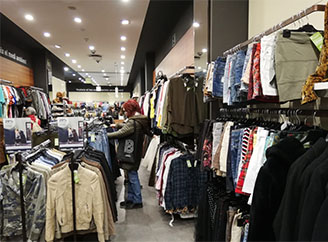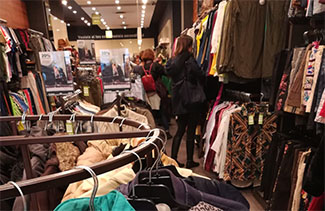consent_cookie
Duración: 1 year
Stores the user's cookie consent state
23-02-2020
Humana has opened today a new sustainable fashion store in Barcelona, on Gran de Gracia street, 53. The store has a commercial area of 200 square meters on the street floor. It has a capacity of about 6,000 garments distributed in the sections of women, men, children, large sizes, Human Selection and home textiles.
With this there are already 21 stores in Barcelona and 54 throughout Spain. In 2019, nearly 2 million customers passed through them, a figure that shows that the consumer attracted by sustainable fashion and responsible consumption and that he is also committed to the Foundation's social purposes is increasingly numerous.
2.7 million new items left unused in 2018
Buying secondhand fashion avoids the consumption of millions of new clothes. This is reflected in a report by Humana based on a survey of 700 customers of the secondhand fashion stores in Madrid and Barcelona, and that indicates that six out of ten users say that, when buying a garment in the Foundation's establishments, they do not need to acquire it in another conventional point of sale.
Customers of Humana stores acquired a total of 4.7 million garments in 2018. This implies that, at a minimum, the commitment to reuse in that year prevented the consumption of 2.7 million new items, taking into account that replacement rate of 60%. It is a relevant saving for the environment considering that, for example, jeans type pants require 3,781 liters of water in the process of cotton production, manufacturing, transport and washing, and causes an emission of 33.4 kilos of CO2 during this cycle
The report also reveals the reasons for purchase in secondhand stores: 52% are committed to the protection of the environment or the company's social purposes. The remaining 48% acknowledge that the main motivation for acquiring garments in Humana is the quality and varied offer at affordable prices.
The textile and fashion industry faces a major environmental problem: it is responsible for 8% of global CO2 emissions and also requires a very high level of consumption of resources and raw materials to meet the growing production of garments (translated into a fast demand fashion also in expansion) and a high level of waste generation, pre and post consumption.

